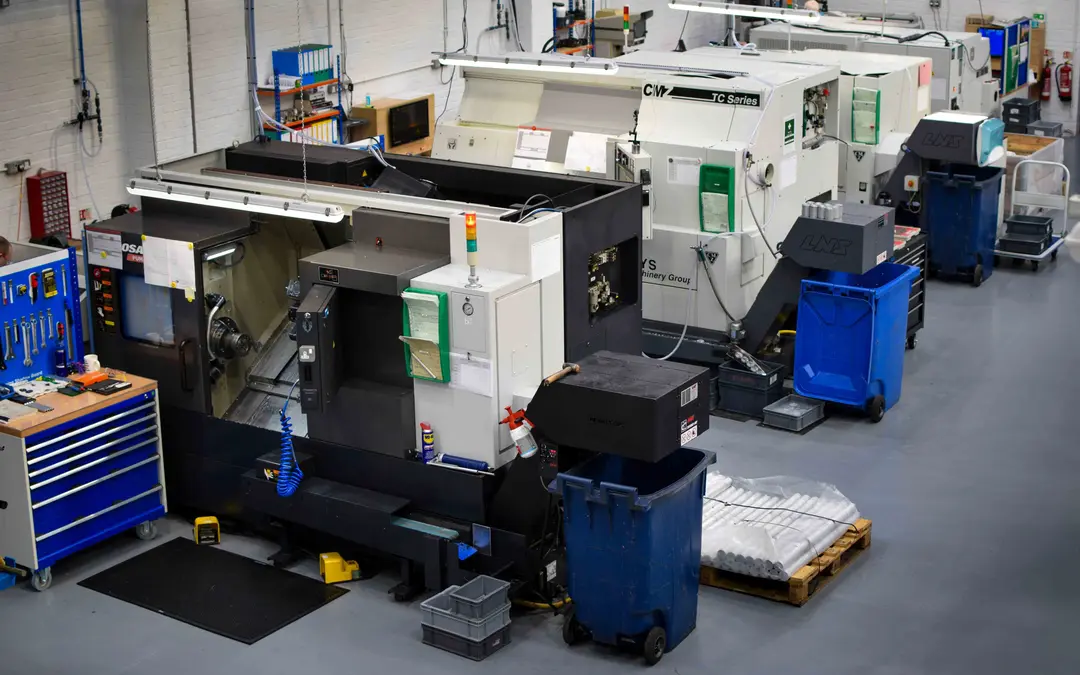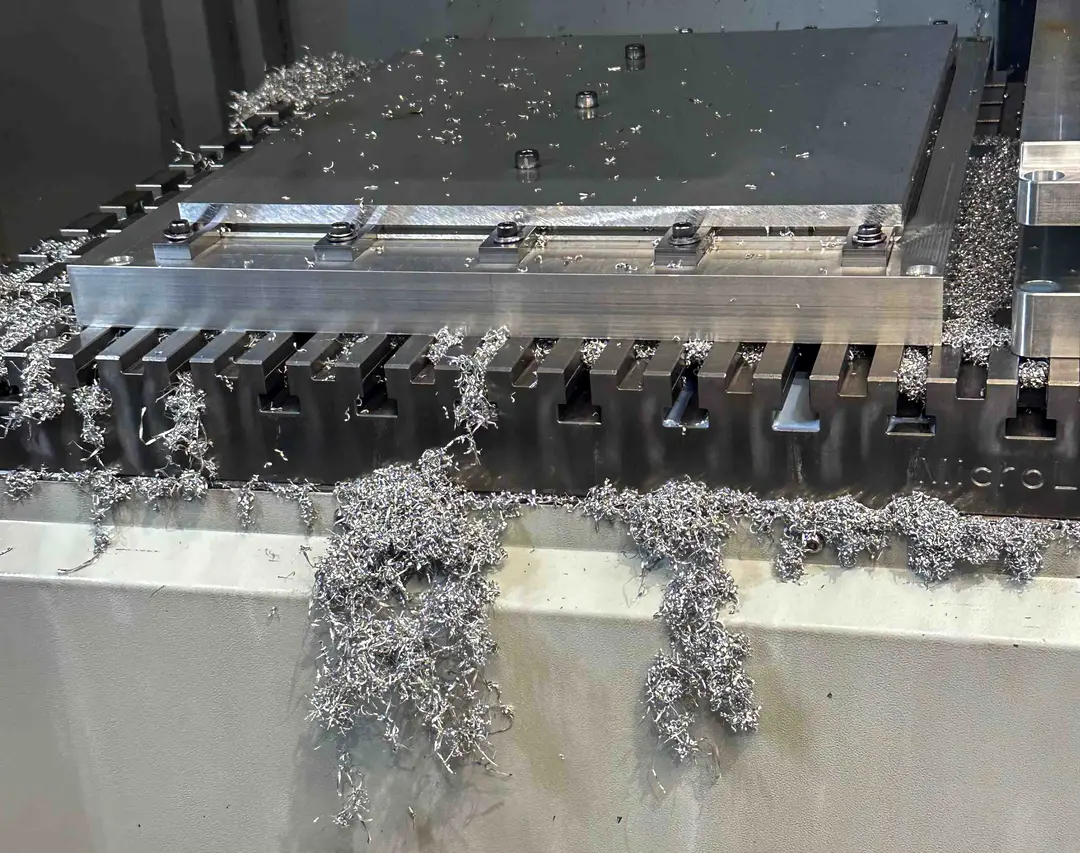 Contact us
Contact us

Environmental responsibility is becoming a key consideration in modern manufacturing. Green machining offers a smarter, more sustainable way to produce high-precision components without compromising on quality or performance. As industries adapt to changing expectations, sustainable machining is becoming essential for staying competitive and future-ready.
This blog explores how CNC machining can be made more sustainable across every stage of production. You'll learn about the environmental impact of CNC processes, discover practical green manufacturing strategies, and explore both the benefits and challenges of going greener. Whether you're an engineer, buyer, or manufacturer, these insights will help you make more informed and future-ready sourcing decisions.

Understanding the environmental impact of CNC machining is the first step towards making your operations more sustainable. Although CNC processes are known for their precision and efficiency, they still rely heavily on electricity and raw materials. Every aspect, from energy usage to waste disposal, affects your overall environmental footprint.
CNC machines run for long periods and often require high-speed operation, leading to heavy electricity consumption. Motors, drive systems, cooling units and control interfaces all contribute to total energy draw. Without energy-efficient upgrades, the environmental impact of CNC machining can quickly escalate across large-scale facilities.
Cutting fluids are essential for temperature control and surface finish but often contain synthetic chemicals that are difficult to dispose of safely. If these fluids are not managed properly, they can leak into local water supplies or harm the surrounding ecosystem. Sustainable machining requires choosing safer alternatives and ensuring responsible fluid handling practices.
CNC machining may release fine particles, mists, and volatile organic compounds (VOCs) into the air. These emissions can affect both indoor air quality and external environmental conditions if not filtered or controlled. The energy required to power machines also contributes to CO₂ output, further amplifying the impact CNC machines have on the environment.
CNC machining is a subtractive process, meaning excess material is cut away to shape the final part. This generates significant scrap in the form of swarf, offcuts, and unused stock. Even when working with high-precision techniques, material waste still builds up unless processes are closely optimised.

To reduce negative effects, many manufacturers are adopting green machining strategies tailored to the CNC environment. These include energy-saving equipment, smarter waste management, and eco-conscious material choices that reduce the environmental impact of CNC machining. When assessing potential suppliers, look for those who prioritise sustainable machining innovations and continuous improvement.
Modern CNC machines are often equipped with inverter-controlled motors and built-in energy management systems. These technologies help lower energy consumption by adjusting speeds and reducing idle power draw. Facilities may also implement smart lighting systems and track usage through monitoring software for ongoing efficiency gains.
Reducing waste starts with better planning and smart production methods. Nesting software, advanced CAD/CAM integration, and real-time stock tracking all help minimise excess and reduce scrap. Suppliers who adopt just-in-time manufacturing can significantly lower both raw material use and warehouse waste.
Eco-friendly cutting fluids are typically made from plant-based oils or biodegradable compounds. These fluids are designed to perform well while reducing environmental harm and improving workplace safety. Using them as part of your green machining approach can support both sustainable manufacturing and regulatory compliance.
Green manufacturing involves reclaiming scrap materials like swarf and offcuts for reuse or recycling. Many CNC shops now repurpose leftover stock or sell it back into the supply chain to reduce waste. This sustainable approach often extends to value-added processes, including surface finishing solutions that reduce the need for rework and material loss.
Dry machining eliminates the need for cutting fluids, making it one of the cleanest machining methods available. Near-dry machining, or minimum quantity lubrication (MQL), applies a controlled mist of lubricant to the cutting zone. These practices support sustainable machining by improving air quality and reducing disposal requirements.
Your browser does not support the video tag.Dry Machining at Penta Precision
Investing in green machining has clear advantages for both manufacturers and their customers. It helps reduce the environmental impact of CNC machining while supporting stronger business performance. For procurement teams, working with sustainable partners can also boost brand reputation and support ESG and compliance goals.
Some of the key benefits include:
You also benefit from suppliers who are focused on innovation and long-term efficiency. Those adopting green manufacturing often have better processes, shorter lead times, and stronger quality control systems. This leads to more consistent results without compromising your deadlines or technical requirements.
Despite its benefits, green manufacturing comes with several hurdles for businesses to navigate. Upgrading equipment, improving infrastructure, or integrating new systems often involves high upfront costs. For smaller operations or legacy facilities, this investment can delay the shift to sustainable machining.
It also takes time and training to implement new techniques like dry machining or energy monitoring. Adopting these methods often requires a change in workplace culture, not just equipment. Balancing production output with sustainability goals can be difficult during periods of high demand.
Another challenge is the lack of consistent sustainability standards across the machining industry. Without common benchmarks, comparing supplier credentials can be unclear or misleading. That's why it's essential to ask specific questions and look for relevant certifications when assessing green machining capabilities.

Green machining is no longer a niche concern, it's a strategic advantage in today's manufacturing landscape. By reducing emissions, energy consumption, and material waste, it helps future-proof your supply chain. Choosing a precision CNC machining partner that prioritises sustainability is a smart move for your business and the planet.
Companies like Penta Precision are leading the way with ISO 9001:2015 certification, efficient supply chain management, and deep expertise in complex materials. We provide complete support from collaborative design through to dependable delivery. Our focus on high-performance components ensures every project is executed with care, consistency, and environmental responsibility.
Green machining is the practice of reducing the environmental impact of CNC manufacturing processes. It focuses on conserving energy, minimising waste, and using safer materials and fluids. These efforts help businesses reduce emissions while maintaining reliable machining performance.
Traditional CNC machining uses a lot of electricity and generates scrap material and chemical waste. Older machines and non-recyclable materials contribute further to pollution and energy inefficiency. Green machining addresses these issues by using smarter methods and cleaner alternatives.
Sustainable practices include using energy-efficient CNC machines and switching to eco-friendly cutting fluids. Many manufacturers also recycle swarf and repurpose leftover materials to reduce waste. Adopting lean production techniques further minimises excess and supports long-term sustainability.
Energy-efficient machines use intelligent controls to reduce electricity consumption during machining cycles. They often include software that monitors performance and powers down components when not in use. These features lower energy demand without compromising part accuracy or speed.
Minimising waste begins with optimised design and accurate programming. Tools like nesting software and real-time inventory tracking help reduce overuse of raw materials. Reusing offcuts and recycling scrap also supports sustainable manufacturing practices.
Yes, many manufacturers follow certifications such as ISO 14001 to guide their environmental efforts. These standards set clear expectations for managing and reducing environmental impact. Choosing certified suppliers ensures you're working with partners committed to sustainable machining.